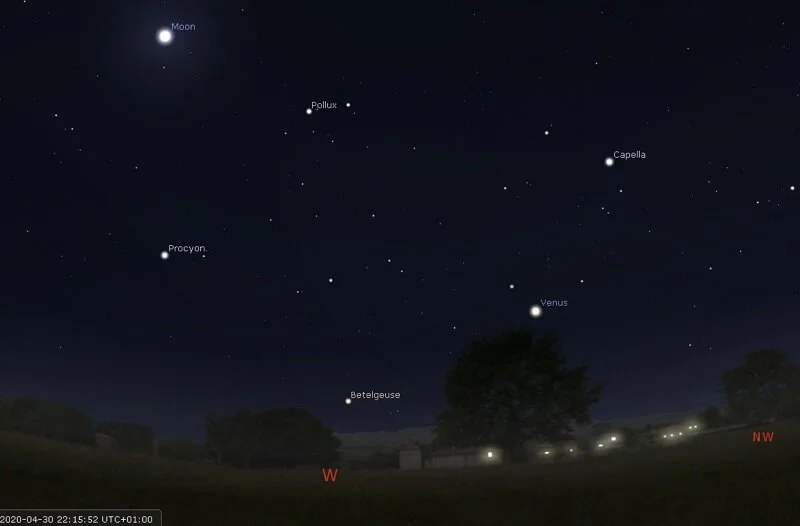
Ursids meteor shower - December 21st - December 22nd
A week after what can be a spectacular Geminid’s show, the Northern Hemisphere has Ursid’s meteor shower. The meteor shower commences on December 17th and finishes December 26th and peaks around December solstice on December 22nd. Up to 10 meteors per hour can be seen from the constellation Ursa Minor and with the waxing crescent moon setting in the early evening there will be dark skies.
Image shows position of Ursids meteor shower in the North, on Dec 22nd at 02:00
The Ursids Meteor shower is caused by debris left over from Tuttle’s Comet as Earth orbits through it. Tuttle’s Comet next perihelion is due August 27, 2021.
*Perihelion is the point in the orbit of a planet, asteroid or comet that is nearest to the sun. It is the opposite of aphelion, which is the point farthest from the sun































